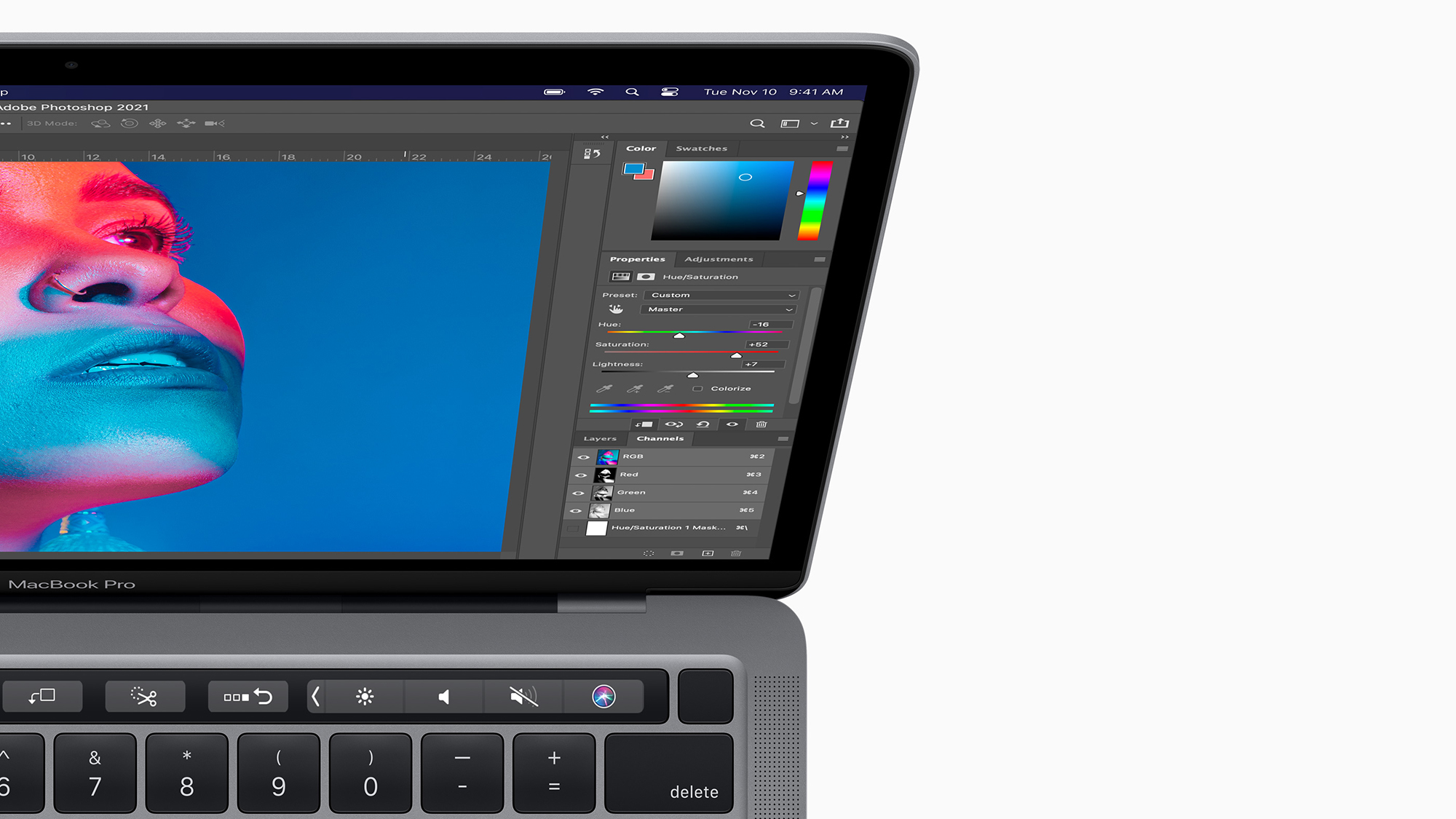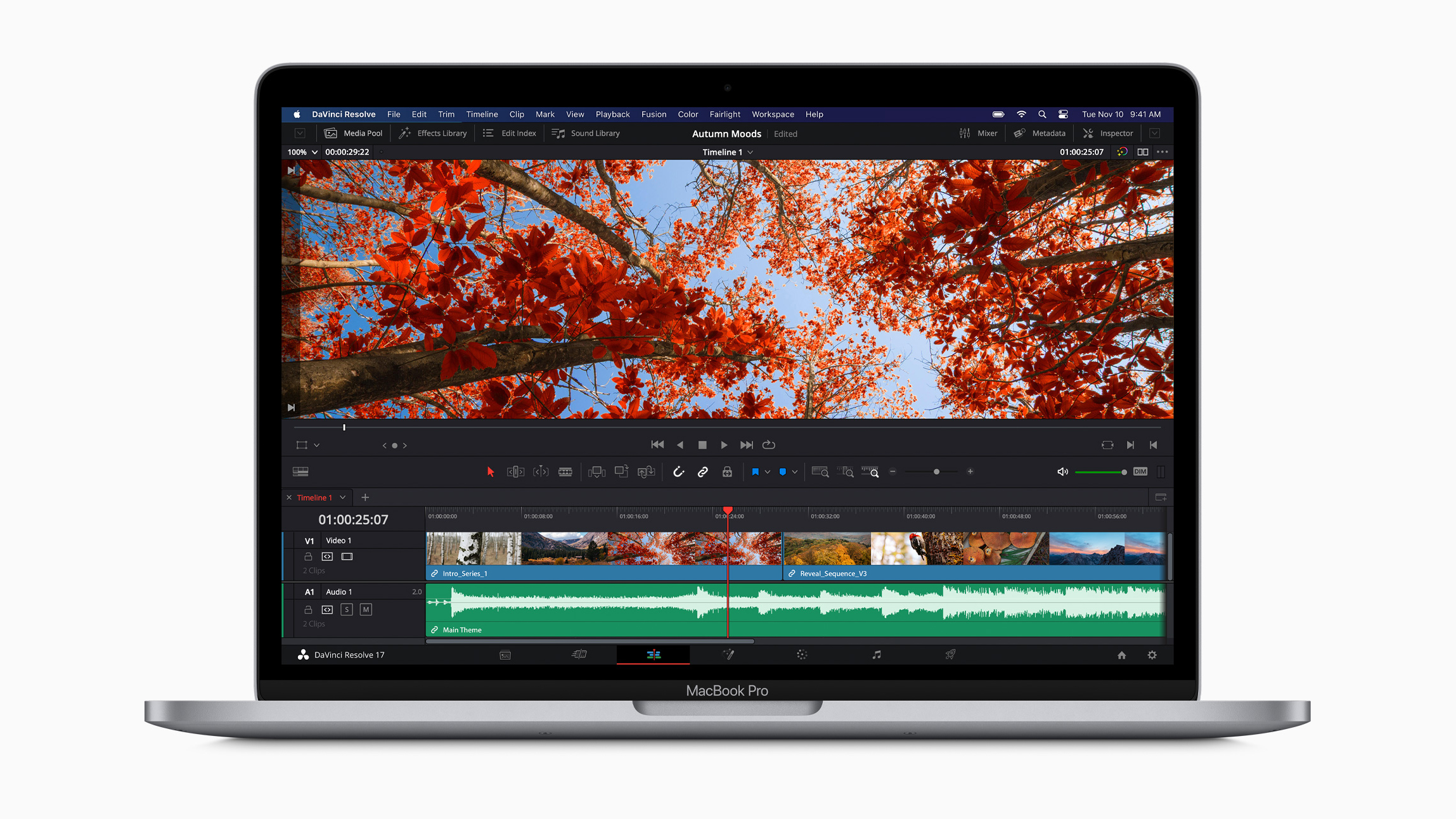Apple MacBook Pro 13in (2020) review: Powerful, portable – and almost perfect
The first business-grade M1 laptop is a huge hit


-
+
Next-generation performance
-
+
Superb battery life
-
+
Familiar build quality
-
-
Limited expandability
-
-
Not as broadly compatible as older MacBooks

After more than a decade of designing in-house chips for iPhones and iPads, Apple has finally said goodbye to Intel and started putting its own processors into Mac computers as well. The ARM-based Apple Silicon M1 CPU is found in the latest revisions of the MacBook Air, Mac mini and iMac – but it’s the new 13in MacBook Pro that’s likely to be of most interest to businesses.
Apple MacBook Pro 13in (2020) review: M1 processor compatibility
If you’re already using Macs in your business then you might be wary of the idea of switching to a new processor. Rest assured, the transition is almost invisible. The latest version of macOS runs identically on both M1 and Intel Macs (actually it has a few extra features on M1 models, which we’ll discuss below) – and a custom translation layer called Rosetta 2 allows you to seamlessly install and run applications that were written for the x86 platform.
There are a few caveats, however. If you’re reliant on legacy software then you need to know that M1 Macs won’t run any version of the operating system older than macOS 11.0 (the initial release of Big Sur), and it’s not guaranteed that low-level device drivers will work at all.
Note too that, without an Intel chip, you can no longer use Boot Camp to run Windows on Mac hardware. The closest you can get is installing the ARM edition of Windows inside a virtualisation host like Parallels – but right now this should be considered an experimental solution, and we’d recommend extensive testing before you rely on it for anything.
Apple MacBook Pro 13in (2020) review: Design
The new MacBook Pro looks outwardly identical to the last-generation Intel-based model, and it’s precisely as portable, measuring a modest 16mm thick and weighing 1.4kg. There are thinner, lighter alternatives – the Windows-based Dell XPS 13 springs obviously to mind, as does Apple’s own MacBook Air – but we can’t call the MacBook Pro cumbersome.

One change is that the Touch Bar is no longer optional on the M1–powered MacBook Pro: whether you want it or not, you’re getting it. And while the aluminium casing is sturdy and practical, it’s somewhat on the dull side: your only colour options are silver and “Space Grey”, which won’t turn many heads.
Apple MacBook Pro 13in (2020) review: Display
Currently the M1 MacBook Pro is only available with a 13in display – the 16in model is still Intel-powered – and it uses the same IPS panel as the 2019 revision. This is fine by us: it has the same ultra-sharp 2,560 x 1,600 “Retina” resolution, and superb brightness and colour reproduction. We measured an excellent peak brightness of 509cd/m2, with impressive colour coverage of 97.9% of the P3 colour space. Colour accuracy is outstanding too, with an average Delta E of 0.93 indicating that this screen is more than adequate for professional-grade photo and video work.
Sign up today and you will receive a free copy of our Future Focus 2025 report - the leading guidance on AI, cybersecurity and other IT challenges as per 700+ senior executives
If we had to nitpick, we’d note only that the black surround measures 9mm at the sides and 14mm at the top; that’s not enormous, but it looks slightly conspicuous next to, say, that Dell XPS 13. And as usual there’s no support for touch, which – in light of the experience now offered by the iPad Pro – is starting to feel like a stubbornly arbitrary omission.
Apple MacBook Pro 13in (2020) review: Keyboard and touchpad
The 2020 MacBook Pro comes equipped with Apple’s Magic Keyboard, which features the company’s latest scissor mechanism. Compared to the old butterfly switches, this makes it much harder for dust and crumbs to get stuck under the keys, which should mean a lot fewer inconvenient breakdowns. It’s also more tactile to type on, with the key travel distance increased from 0.7mm to 1mm.
Above it, the Touch Bar is flanked by a physical Escape key at the left and a power button at the right. The latter doubles up as a fingerprint reader, adding an extra degree of security for unlocking the computer, filling in passwords and authorising payments.

The touchpad, meanwhile, is a delight to use. Apple’s touchpads have always been gloriously responsive, and this one measures a huge 135 x 81mm and supports both force touch and haptic feedback, so you can control its clickiness and optionally ‘hard press’ to access additional functions and options.
Apple MacBook Pro 13in (2020) review: Specs and performance
The M1 processor inside the MacBook Pro has eight ARM-based CPU cores, along with eight GPU cores. They’re clocked at a maximum speed of 3.2GHz, although since this is a new chip design, that doesn’t necessarily tell us anything about how it compares to the performance of other systems.
As for memory, the standard allocation is 8GB, and this should be fine for most people’s computing requirements. If you need to work with large datasets or engage in hardcore multitasking you can upgrade this to 16GB for an extra £167 excluding VAT; there’s no 32GB option however, which may be a turn-off for those involved in big data or virtualisation.
Still, you can max out the storage: the entry-level model comes with 256GB, with 512GB, 1TB and 2TB options available at premiums of £167, £333 and £667 respectively (all exclusive of VAT). Pick wisely, for as usual it’s not possible to upgrade the RAM or storage after purchase: indeed, to maximise efficiency, the M1’s system memory is located on the same physical chip as the CPU and GPU cores.
In use the M1 feels like a regular MacBook Pro, but smoother and snappier than we’re used to. When you open the lid, the screen springs instantaneously to life, and the dreaded beachball didn’t appear even when we loaded up Chrome with dozens of tabs. The system runs cool too, to the extent that we never noticed a whisper from the tiny internal fan. Compared to the jet-engine sound of an older MacBook under heavy load, it’s a big improvement.

That upgraded experience carries through to real-world performance. When we ran our standard suite of desktop benchmarks on an M1 MacBook Pro equipped with 8GB of RAM, it achieved a magnificent overall score of 220. That’s well beyond what we’d expect from a regular business laptop, and up into specialist workstation territory.
We should be clear that this performance was achieved using M1-native code. Many of the most popular software packages have now been updated to take advantage of the new Apple architecture, including Microsoft Office, all major web browsers and numerous Adobe Creative Cloud applications. Your particular line-of-business tools, however, may still be Intel-based for the foreseeable future.
Happily, this doesn’t wreck performance. Running our benchmark code under Intel emulation still yielded an absolutely respectable overall score of 125. For comparison, the 2021 Razer Book 13 scored 124, while the £1,400 Lenovo Yoga 9i merely nudged ahead with 132. It’s fair to say that, whether you’re using native or emulated code, raw speed is a non-issue.
Apple MacBook Pro 13in (2020) review: Battery life
Desktop performance isn’t the only thing the M1 architecture has going for it. The system design is also more power-efficient than the old Intel platform, and that brings big benefits when it comes to battery life. With the screen set to a standard brightness of 170cd/m2 and wireless networking disabled, we were able to watch full-screen video for an amazing 17hrs 31mins.
That’s by far the best battery life we’ve ever seen from any Mac laptop, and comes closer than any other device to matching the Asus ExpertBook B9450F’s 22+hrs result. It outlasted most Intel-based rivals by at least four hours, and in everyday use it should easily translate to a full working day away from the mains.

Apple MacBook Pro 13in (2020) review: Ports and features
Apple has a tendency to ditch legacy connectors at the earliest opportunity, even on ‘Pro’ computers. Previous Intel-based MacBook Pro systems came with a maximum of four USB Type-C ports and a 3.5mm audio socket, and the new M1 model is even more minimal, offering just two USB-C ports along with the audio connector.
This doesn’t necessarily have to be a dealbreaker. Type-C cables and peripherals are now easily available, and both sockets are Thunderbolt 4-compatible for the fastest possible speeds. When you sit down at your desk, you can use a USB dock to connect a keyboard, mouse, monitor and power supply, and still leave one port free for whatever else you may want to plug in. The system only natively supports a single external 4K display, but you can add an external DisplayLink adapter to drive additional screens.
On the software side, the latest edition of macOS (version 12, dubbed “Monterey”) includes a few M1-only capabilities that aren’t available on Intel models, including on-device dictation that transcribes your voice without sending anything to the cloud – reassuring for confidential information. M1 Macs can also blur your background in FaceTime, recognise and interact with text in photos and screenshots, and generate 3D AR objects from 2D photos. These are minor benefits for now, but as Apple continues to develop its own platform, we expect more and more M1-exclusive features will appear in future OS releases.
Apple MacBook Pro 13in (2020) review: Verdict
With its new internal architecture, the MacBook Pro 13in raises the bar for performance and battery life. Right now there’s nothing out there on the Windows side that can compete.
That said, it’s worth reiterating that the M1 itself can’t run Windows, and indeed may struggle with older Mac software. The 16GB RAM limit might be a problem for some too, while others will lament the lack of a big-screen version, or the minimal connectivity options for peripherals.
Even so, for businesses seeking a laptop that’s fast, sturdy and unlikely to conk out half-way through an offsite strategy day, the new MacBook Pro is a godsend. Apple has taken a bold step in turning away from the entrenched Intel architecture, but it’s reaped enormous rewards – and the in-house design has evidently brought cost savings too, meaning the base configuration can be had for barely more than a grand. It’s a great price for a fantastic general-purpose laptop.
Apple MacBook Pro 13in (2020) specifications
| Processor | Apple Silicon M1 |
| RAM | 8GB (16GB option) |
| Graphics adapter | Integrated |
| Storage | 256GB (512GB, 1TB, 2TB options) |
| Screen size (in) | 13.3in |
| Screen resolution | 2,560 x 1,600 |
| Screen type | IPS |
| Touchscreen | No |
| Pointing devices | Apple Force Touch Trackpad |
| Memory card slot | No |
| 3.5mm audio jack | Yes |
| Graphics outputs | USB Type-C |
| Other ports | Secondary USB Type-C |
| Web Cam | 720p |
| Speakers | Stereo Dolby Atmos (wattage not stated) |
| Wi-Fi | Wi-Fi 6 |
| Bluetooth | 5.0 |
| NFC | No |
| Dimensions, mm (WDH) | 304 x 212 x 16mm |
| Weight (kg) - with keyboard where applicable | 1.4kg |
| Battery size (Wh) | 5,100mAh |
| Operating system | macOS 11 (“Big Sur”) |
Darien began his IT career in the 1990s as a systems engineer, later becoming an IT project manager. His formative experiences included upgrading a major multinational from token-ring networking to Ethernet, and migrating a travelling sales force from Windows 3.1 to Windows 95.
He subsequently spent some years acting as a one-man IT department for a small publishing company, before moving into journalism himself. He is now a regular contributor to IT Pro, specialising in networking and security, and serves as associate editor of PC Pro magazine with particular responsibility for business reviews and features.
You can email Darien at darien@pcpro.co.uk, or follow him on Twitter at @dariengs.
-
 CISPE claims European Commission gave Broadcom a ‘blank cheque to raise prices, lock-in, and squeeze customers’ with VMware deal
CISPE claims European Commission gave Broadcom a ‘blank cheque to raise prices, lock-in, and squeeze customers’ with VMware dealNews Cloud providers have issued a formal response to the General Court of the European Union after the Commission defended its approval of the deal
By Emma Woollacott Published
-
 Nutanix wants to help customers shore up cloud sovereignty
Nutanix wants to help customers shore up cloud sovereigntyNews New automation tools and infrastructure management capabilities look to tackle single-vendor dependency and shore up sovereignty requirements
By Ross Kelly Published
-
 The NCSC touts honeypots and ‘cyber deception’ tactics as the key to combating hackers — but they could ‘lead to a false sense of security’
The NCSC touts honeypots and ‘cyber deception’ tactics as the key to combating hackers — but they could ‘lead to a false sense of security’News Trials to test the real-world effectiveness of cyber deception solutions have produced positive results so far
By Emma Woollacott Published
